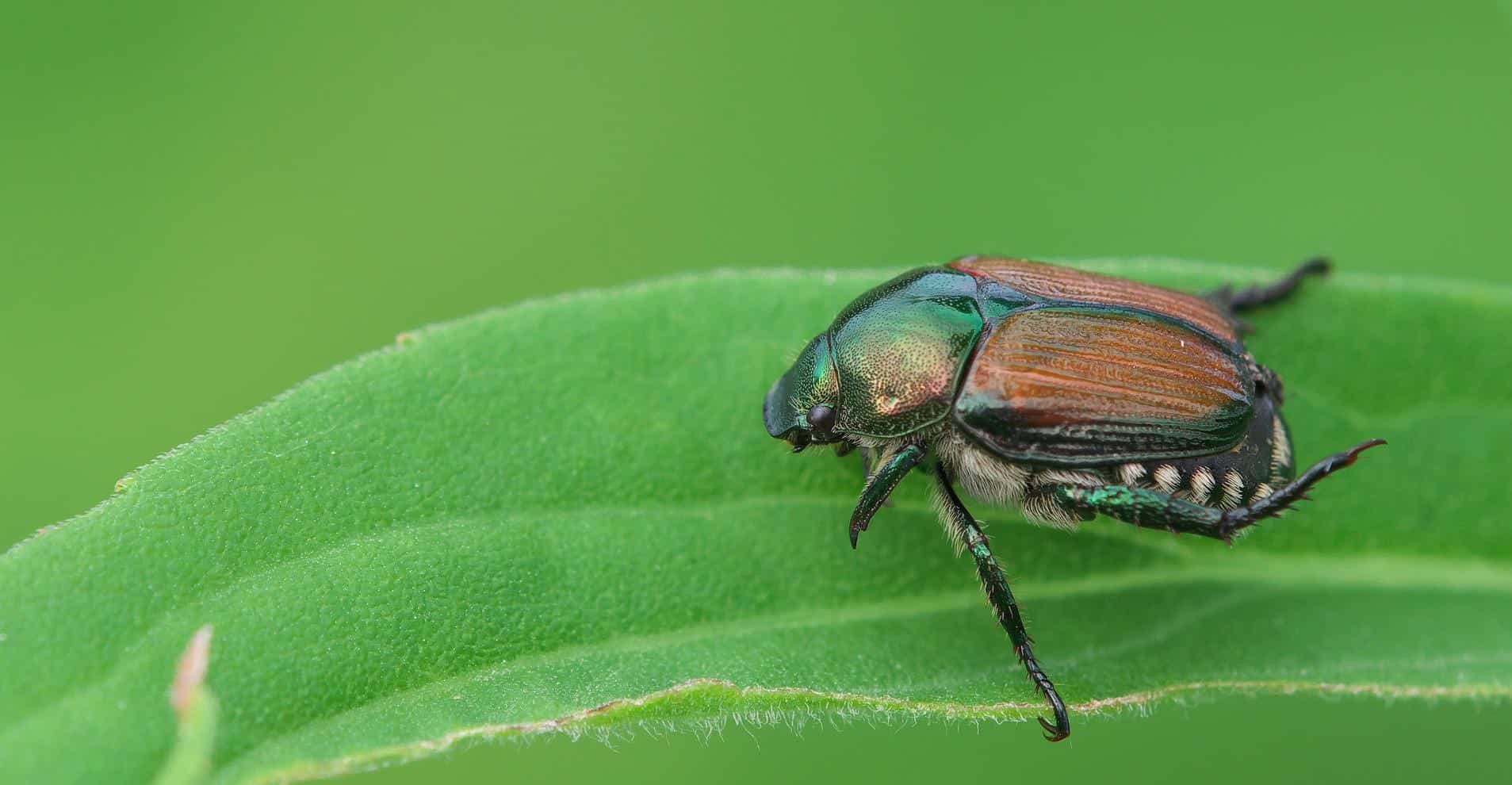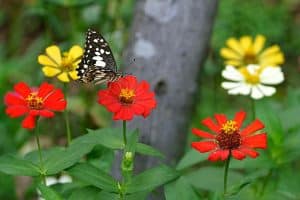With iridescent bodies that resemble flying jewels, Japanese beetles are one of the more attractive garden pests in Georgia. However, the damage they cause isn’t so pretty. Left unchecked, an infestation of this non-native species can wreak havoc on flowers, shrubs and vegetables, leaving behind the skeletal remains of your once-thriving garden. In this blog we’ll take a look at how to identify these voracious summer pests, as well as several steps you can take towards controlling Japanese beetles.
What is a Japanese Beetle?
As the name implies, Japanese beetles are native to northern Japan. In 1916, larvae in the soil of nursery stock brought in for the World’s Fair introduced them to North America. Since that time, they’ve spread to most of the contiguous 48 states, where they feast on over 300 species of plant every summer. Living four to six weeks, the first Japanese beetles usually make an appearance in June, and most adults have died off by mid-August, after laying eggs. The worst infestations occur in states to the east of the Mississippi River, including Georgia.

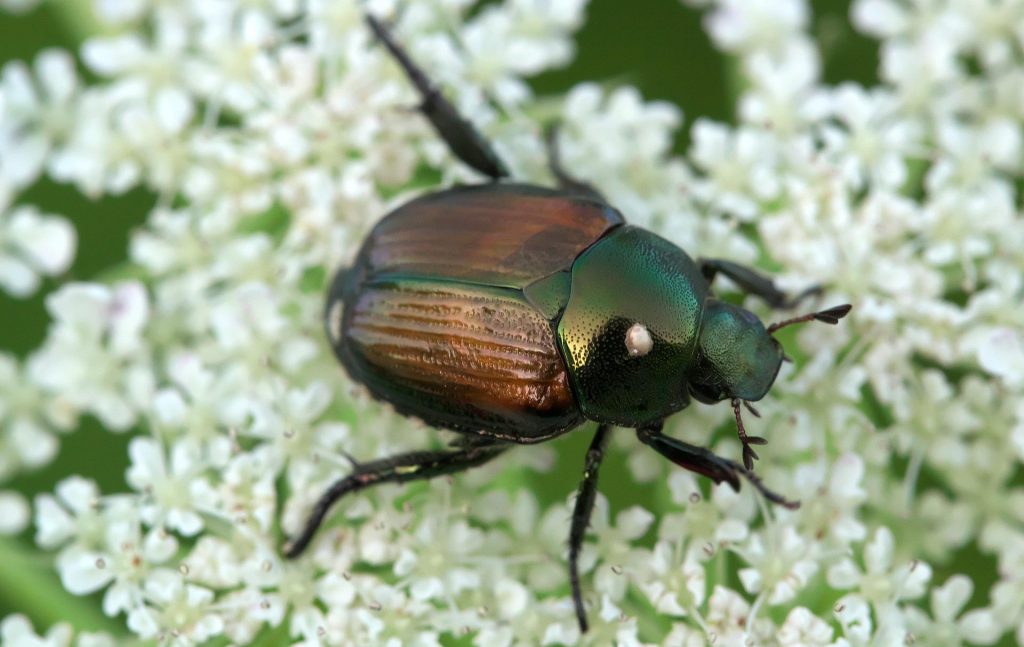
How Do I identify Japanese Beetles in My Garden?
Adult Japanese beetles are easily identified due to their brilliant and distinct coloration. Approximately 3/8 to ½ inch in size, they have a plump metallic green body and copper-colored wing covers, with a row of white spots on the back of the abdomen. However, you will probably see signs of the damage they cause before you spot the culprits themselves. They love tender leaves, and will congregate in groups to feed on the soft tissue between veins, leaving the previously-noted “skeletonized” appearance. Healthy, well-established plants can tolerate this leaf loss with little to no long-term consequences – although it does look unsightly. Newer plantings, however, should ideally be protected.
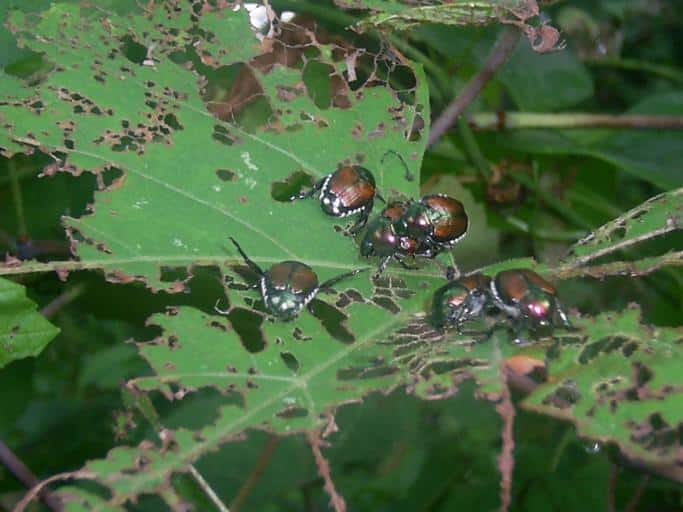
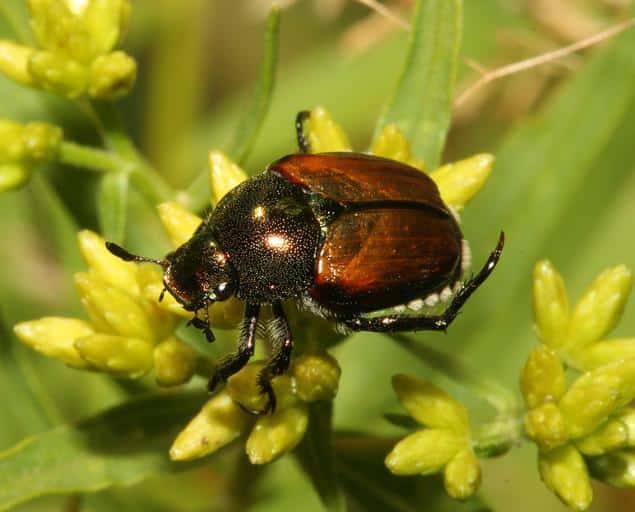
What’s the Best Way to Control Japanese Beetles?
There are several methods to manage Japanese beetles, depending on the time of year and the size of your infestation.
- Prevention: Adult beetles emerge from grubs, so apply a preventive grub insecticide to lawns before the end of July to keep eggs from hatching. The active ingredient should consist of imidacloprid, halofen0zide, clothianidin or thiamethoxam.
- Start Eradication Early: In late May or early June, start inspecting your garden for signs of early arrivals. Handpicking them from plants (they do not bite and cannot hurt you) and drowning them in soapy water is an effective strategy for preventing them from attracting more beetles. This is easiest to do in the morning, before the beetles become too active. Many garden stores sell Japanese beetle traps, but as they tend to draw more beetles to the area than would normally be present, we don’t recommend them.
- Spray: When beetles start showing up in significant numbers, spray your ornamentals, perennials and annuals with synthetic insecticides that contain carbaryl, imidacloprid, permethrin, bifenthrin or malathion. Use organic products such as neem oil on fruits and vegetables. During periods of heavy activity, we recommend that you spray every 3-7 days to maintain effective population control.
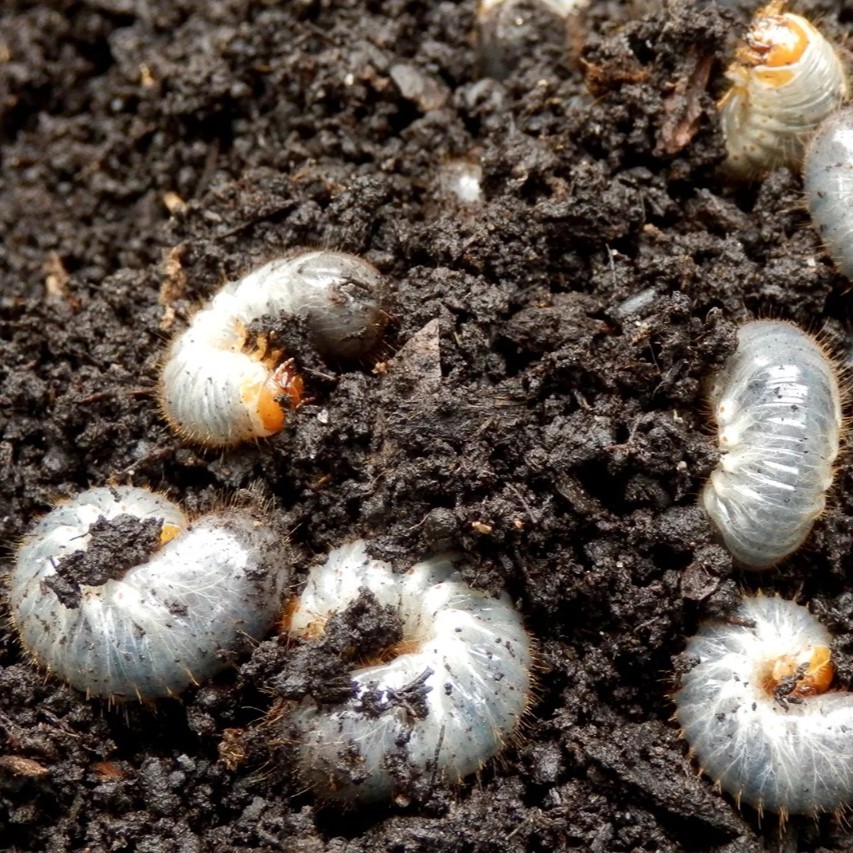
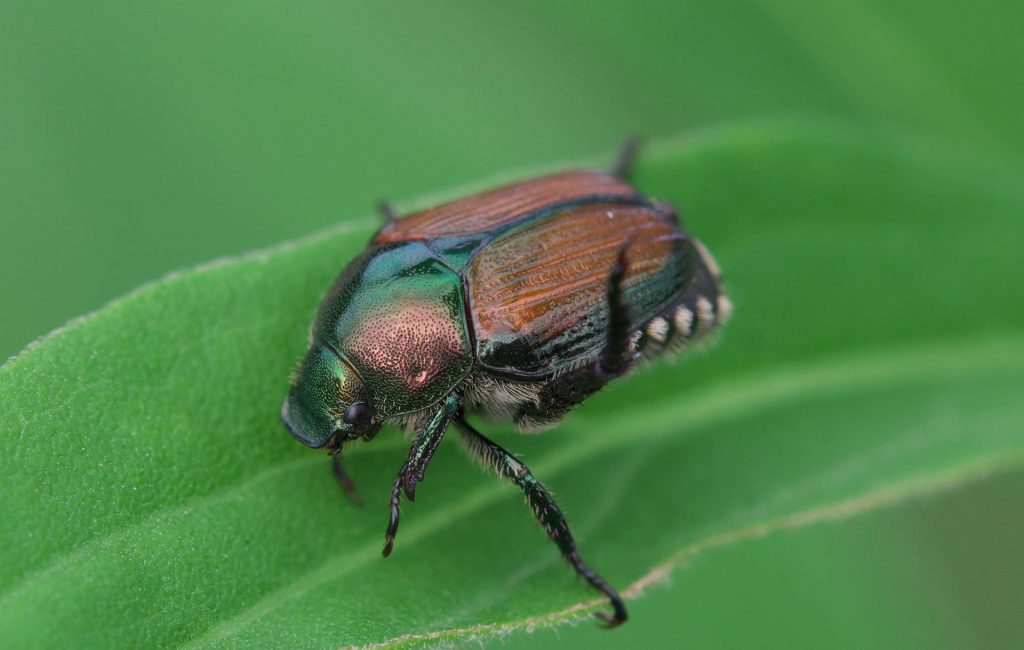
Contact Us!
If you have any additional questions about controlling Japanese beetles or your other landscaping needs, be sure to contact Oasis Landscapes & Irrigation.

